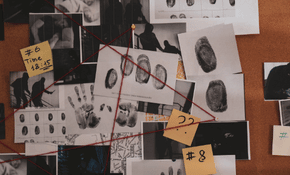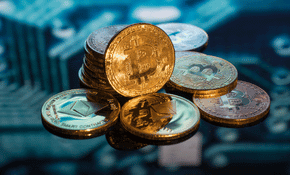Money laundering through the Vancouver Model has had a significant impact on the Canadian economy and has led to increased organized crime activities. In response, the Canadian government has taken measures to combat money laundering and strengthen anti-money laundering regulations. However, preventing the Vancouver Model requires the cooperation and compliance of financial institutions, real estate, and gambling sectors with AML regulations. Increasing awareness of the Vancouver Model and regularly scanning transactions can help detect suspicious activities and prevent money laundering. With integrated law enforcement teams and the focus on high-risk sectors, the Vancouver Model has been successful in curbing money laundering and drug trafficking, but there is still more work to be done to address the underlying social and economic factors contributing to these illegal activities.
How is Vancouver Model Used in Money Laundering?
The Vancouver Model for money laundering is a highly sophisticated method that has been in use for over a decade. Its operation involves Chinese gamblers carrying Canadian-billed suitcases filled with large sums of cash to casinos in Vancouver, where they exchange their money for casino chips that are then converted into Canadian dollars. This process effectively conceals the true source of the money and makes it appear as legitimate income.
The Vancouver Model has been successful due to the strict regulations that prohibit Chinese citizens from withdrawing large sums of money from abroad. However, this restriction has resulted in a negative impact on gamblers in China, leading them to seek out ways to bypass the law. This has resulted in a significant increase in illegal money laundering activities.
Once the funds arrive in Canada, they are often mixed with cash from the drug trade and laundered through private mortgages and BC casinos. This allows the dirty money to be concealed and then legally transformed into clean, legitimate income.
Although the Vancouver Model has been successful in concealing illegal money, it has also had a significant impact on the Canadian economy. The large sums of money being laundered through BC casinos have led to skyrocketing property prices and an increase in organized crime. In response, the Canadian government has taken measures to combat money laundering and organized crime by strengthening AML regulations and increasing enforcement measures.
History of the Vancouver Model
The name "Vancouver Model" was coined by journalist Sam Cooper in a 2019 report for Global News, in which he outlined the history and impact of the measures. The model was developed by law enforcement officials in response to the rapid growth of organized crime groups, particularly those involved in the drug trade, in the city.
One of the key features of the Vancouver Model is the use of integrated law enforcement teams to investigate and prosecute money laundering and drug trafficking cases. These teams bring together officials from various agencies, including the Royal Canadian Mounted Police, the Canada Revenue Agency, and the Financial Transactions and Reports Analysis Centre of Canada (FINTRAC), to share information and coordinate their efforts.
Another important aspect of the Vancouver Model is the focus on identifying and targeting high-risk sectors for money laundering, such as real estate and luxury goods. Officials in Vancouver have been particularly concerned about the use of real estate purchases to launder money, and have implemented measures such as stricter reporting requirements for real estate transactions and increased scrutiny of foreign buyers.
The Vancouver Model has been credited with helping to curb money laundering and drug trafficking in Vancouver and other cities that have adopted similar measures. However, it has also been criticized by some for being overly focused on law enforcement and not addressing the underlying social and economic factors that contribute to the drug trade and money laundering.
The Result of The Scheme
The Vancouver Model is a tactic developed by money launderers to avoid suspicion of drug trafficking and organized crime. Money launderers need to hide the illegal source of funds in order to carry out their activities, so they always need to turn those funds into a less suspicious asset. At this point, for criminals, British Columbia is a very attractive place to carry out this activity. Vancouver Harbor provides a trade hub with Asia, and BC has a growing marijuana industry in itself. Apart from that, Vancouver is home to many substance users who maintain a stable customer base. Banknotes used to transport large funds extracted from China in suitcases across borders are usually $20 and $50 bills. These small banknotes are the most frequently used in even the largest businesses.

The negative effects of money laundering through the Vancouver Model were felt in almost all states of Canada. The money laundered also affected foreign citizens from purchasing a property in Vancouver. As a result of affecting property purchasers, housing prices and living costs were significantly higher than the local population's budget. In Canada, it was stated in a report that owners of about half of the city's most expensive homes are purchased using secretly structured purchasing methods. This situation not only affects Canada but also affects China negatively. Money laundering via different methods is prone to capital controls of countries.
What to Do to Prevent The Vancouver Model
Because the criminals who implement the Vancouver Model know the traditional ways very well, manual routes change their tactics in order not to go unnoticed. To prevent the Vancouver Model, regulators are increasing their regulations on this issue. Defining money laundering with the Vancouver Model is the responsibility of both financial institutions and the casino and real estate industry. Casinos in British Columbia have also taken measures such as showing a legitimate source for spending over C $ 10,000. With these measures, the realization of money laundering and terrorist financing activities is tried to be prevented. The Vancouver Model is not just a money-laundering activity between Canada and China. So it would be quite wrong to think about this crime in Canada and China.
Institutions such as the gambling and real estate sector where the Vancouver Model takes place are easier to prevent this crime if they comply with the AML regulations they are responsible for. Nowadays, awareness of the Vancouver Model is increasing. For this reason, institutions must implement the responsibilities they are responsible for. Organizations need to know who they do business with, who their customers really are. The potential risks of people whose real identity is known can also be determined. Suspicious persons and activities can be detected by checking these people regularly and even by scanning the transactions. In this way, money laundering activities carried out with the Vancouver Model can also be prevented.







